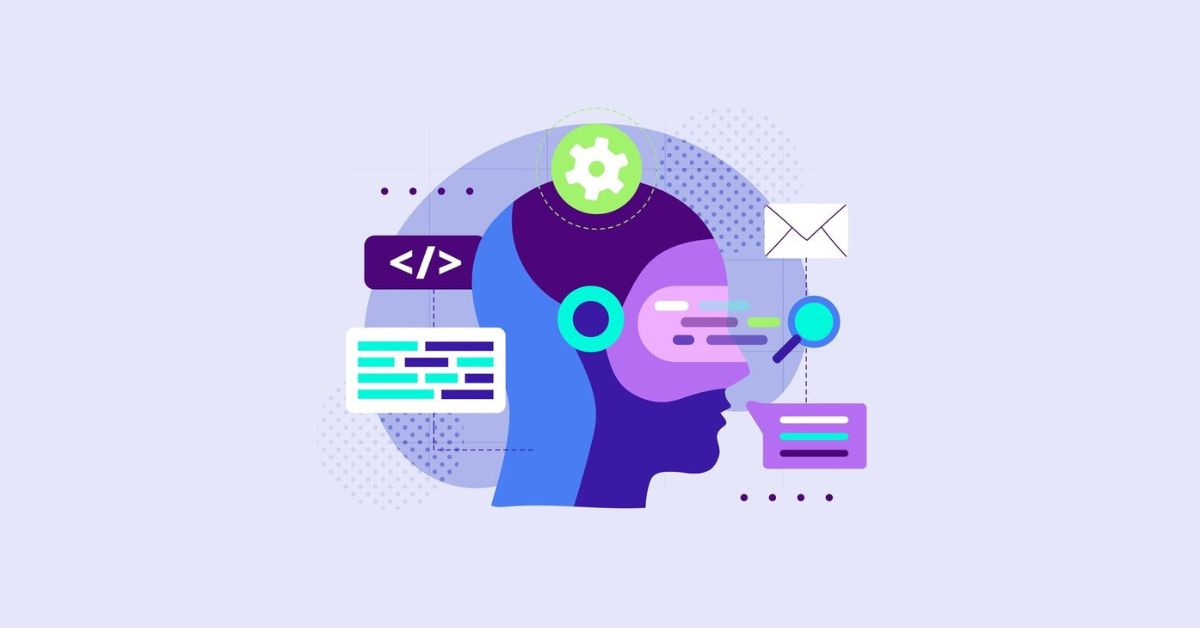Summary
Artificial Intelligence (AI) continues revolutionizing industries, making processes smarter, faster, and more efficient. The AI development process has evolved significantly, incorporating cutting-edge tools and methodologies to streamline the creation of intelligent systems. In this guide, we will walk through the step-by-step approach to developing AI in 2025, covering key aspects such as how to develop artificial intelligence and essential AI development tools.
- Understanding the AI Development Process
– Understanding Business Goals and Use Cases
– Data Collection and Preprocessing
– Choosing the Right AI Model
– Choosing the Best AI Development Tools
– AI Model Training and Optimization
– AI Model Deployment
– AI Model Maintenance and Improvement - Future Trends in AI Development (2025 and Beyond)
- Conclusion
Understanding the AI Development Process
The AI development process involves multiple stages, from identifying business objectives to deploying and maintaining AI solutions. Whether businesses are exploring AI for automation, data analysis, or customer engagement, following a structured approach ensures optimal results. By leveraging advanced AI development tools, organizations can successfully integrate AI into their operations and gain a competitive edge.
Many companies opt for AI development services to ensure seamless implementation and expert guidance throughout the process. These services provide tailored AI solutions based on industry requirements and business goals.
Step 1: Understanding Business Goals and Use Cases
Before diving into the AI development process, it’s crucial to define the objectives. Identifying the problem AI needs to solve ensures that businesses can maximize the benefits of AI implementation. Common AI applications include:
- Customer support automation (chatbots, virtual assistants)
- Predictive analytics for business decision-making
- Natural language processing (NLP) for text analysis
- Computer vision for image recognition
- Personalized recommendations for e-commerce platforms
By determining the use case, businesses can tailor AI models to meet specific needs, ensuring better results.
Step 2: Data Collection and Preprocessing
Data is the backbone of AI. AI model performance is directly impacted by the quantity and quality of data. The key steps in this stage include:
- Data Collection: Gathering structured and unstructured data from various sources, such as databases, IoT devices, user interactions, and APIs.
- Data Cleaning: Removing duplicates, handling missing values, and normalizing data to improve accuracy.
- Data Labeling: Annotating data to help AI models recognize patterns and make accurate predictions.
Businesses often rely on experts to handle complex data preprocessing tasks efficiently.
Step 3: Choosing the Right AI Model
Selecting the appropriate AI model depends on the problem being addressed. The main types of AI models include:
- Supervised Learning: Uses labeled data to train models (e.g., fraud detection, sentiment analysis).
- Unsupervised Learning: Finds patterns in unlabeled data that are hidden (e.g., anomaly detection, customer segmentation).
- Reinforcement Learning: Trains models based on rewards and penalties (e.g., robotics, gaming AI).
Selecting the right AI model requires understanding the data type, business goals, and computational resources available.

People Also Read
How to Choose the Right AI Model for your Software Development
Step 4: Choosing the Best AI Development Tools
AI development has become more accessible with the availability of powerful AI development tools. Some of the top tools in 2025 include:
- TensorFlow: Deep learning model construction and training using an open-source framework.
- PyTorch: A Flexible deep learning library widely used in research and production.
- Scikit-learn: A Python-based machine learning library ideal for data mining and analysis.
- AutoML: Platforms like Google AutoML enable users to create AI models with minimal coding.
- Jupyter Notebooks: Interactive development environments for AI research and model experimentation.
These tools help developers build robust AI systems efficiently and effectively.
Step 5: AI Model Training and Optimization
Training an AI model involves feeding it with data and adjusting parameters to improve accuracy. The key aspects of AI training include:
- Splitting Data: Dividing data into training, validation, and test sets.
- Choosing a Training Algorithm: Using algorithms like Decision Trees, Neural Networks, or Gradient Boosting.
- Hyperparameter Tuning: Adjusting parameters like learning rate, batch size, and number of layers to optimize performance.
- Testing and Validation: Evaluating model accuracy using various metrics such as precision, recall, and F1-score.
Experts in AI development often assist in fine-tuning models to ensure they deliver optimal results.
Step 6: AI Model Deployment
Once an AI model is trained, the next step is deployment. Deployment involves integrating the AI model into a business environment where it can be used in real-time applications. The deployment process includes:
- Selecting the Deployment Platform: Cloud-based (AWS, Google Cloud, Azure) or on-premises solutions.
- Developing APIs: Creating APIs to connect AI models with applications and systems.
- Continuous Monitoring: Ensuring the AI model functions efficiently and retraining it when necessary.
AI models require continuous updates and monitoring to maintain their accuracy and effectiveness.
Step 7: AI Model Maintenance and Improvement
AI is not a one-time implementation; it requires continuous improvement. The key maintenance practices include:
- Monitoring Model Performance: Tracking AI model accuracy over time.
- Handling Data Drift: Updating models when new data patterns emerge.
- Retraining the Model: Feeding updated data into the AI model to improve its predictions.
- Security Measures: Ensuring AI models are protected from potential threats and vulnerabilities.
Businesses that invest in AI development services benefit from professional expertise in maintaining and optimizing AI models for long-term success.
Future Trends in AI Development (2025 and Beyond)
As AI technology advances, the development process is becoming more efficient and accessible. Here are some key trends to watch in AI development:
- No-Code/Low-Code AI Development: Allowing businesses to create AI applications without extensive programming knowledge.
- AI-powered Automation: Enhancing business workflows with intelligent automation.
- Edge AI: Running AI models on edge devices for real-time processing.
- Explainable AI (XAI): Making AI decision-making more transparent and interpretable.
- Quantum AI: Leveraging quantum computing for advanced AI applications.
Conclusion
The AI development process in 2025 follows a structured approach, from defining business goals to deploying and maintaining AI models. Understanding how to develop artificial intelligence requires expertise in data management, model training, and deployment strategies. With the help of advanced AI development tools, businesses can harness the power of AI to drive innovation and efficiency.
By following this step-by-step guide, organizations can successfully integrate AI solutions and stay ahead in the competitive digital landscape.






